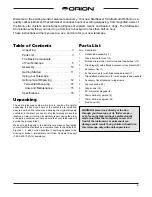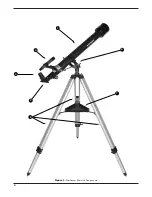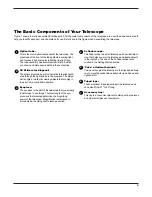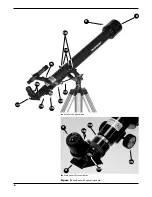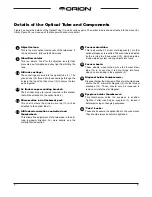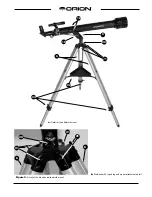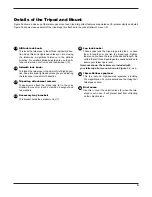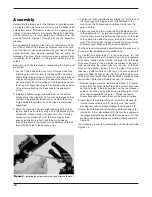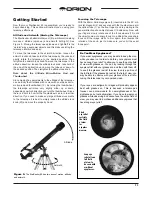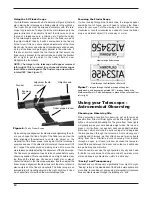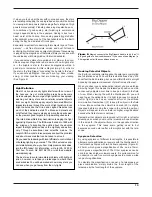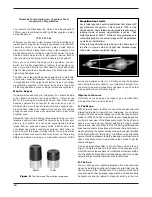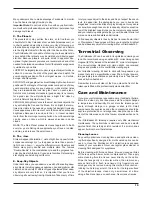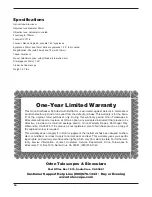
11
Getting Started
Now that your StarSeeker 60 is assembled, you’re ready to
begin observing. This section will instruct you on using your
telescope effectively.
Altitude and Azimuth (Aiming the Telescope)
The StarSeeker 60 altazimuth mount (5) permits motion along
two axes: altitude (up/down) and azimuth (left/right). See
Figure 5. Moving the telescope up/down and right/left is the
“natural” way people aim objects and this makes pointing the
telescope intuitive and easy.
To move the telescope in the azimuth direction, loosen the
azimuth lock knob, take hold of the telescope by the yoke and
gently rotate the telescope to the desired position. Then
retighten the azimuth lock knob. To move the telescope in the
altitude direction, loosen the altitude lock knob, take hold of
the end of the optical tube and move the tube up or down to
the desired position. Then retighten the altitude lock knob.
Note about the Altitude Micro-Motion Rod and
Thumbwheel
Since making fine adjustments to the altitude of the telescope
can be tricky, the StarSeeker 60 comes with an altitude micro-
motion rod and thumbwheel (13). By turning the thumbwheel,
the telescope will move very slightly either up or down,
depending on which direction you turn the thumbwheel. Since
there is a limit to how far the thumbwheel can turn in either
direction, if you need to make any large altitude movements
to the telescope it is best to simply loosen the altitude lock
knob (20) and move the scope by hand.
Focusing the Telescope
With the 25mm Kellner eyepiece (3) inserted into the 90˚ mir-
ror star diagonal (2) and secured with the thumbscrews, aim
the optical tube (1) so the front (open) end is pointing in the
general direction of an object at least 1/4-mile away. Now, with
your fingers, slowly rotate one of the focus wheels (15) until
the object comes into sharp focus. Go a little bit beyond sharp
focus until the image starts to blur again, then reverse the
rotation of the knob, just to make sure you’ve hit the exact
focus point.
®
Azimuth
Altitude
Figure 5.
The StarSeeker 60 has two axes of motion: altitude
and azimuth.
Do You Wear Eyeglasses?
If you wear eyeglasses, you may be able to keep them on
while you observe. In order to do this, your eyepiece must
have enough “eye relief” to allow you to see the entire field
of view with glasses on. You can try looking through the
eyepiece first with your glasses on and then with them off,
to see if the glasses restrict the view to only a portion of
the full field. If the glasses do restrict the field of view, you
may be able to observe with your glasses off by just refo-
cusing the telescope to your unaided vision.
If your eyes are astigmatic, images will probably appear
best with glasses on. This is because a telescope’s
focuser can accommodate for nearsightedness or far-
sightedness, but not astigmatism. If you have to wear your
glasses while observing and cannot see the entire field of
view, you may want to purchase additional eyepieces that
have longer eye relief.
Short
eye relief
restricts
the field
of view
for
eyeglass
wearers.
Long eye
relief allows
full field
of view to
be seen with
or without
eyeglasses.
Содержание StarSeeker
Страница 2: ...2 ...
Страница 4: ...4 Figure 1 StarSeeker 60mm AZ Components 1 4 3 2 6 7 5 ...



